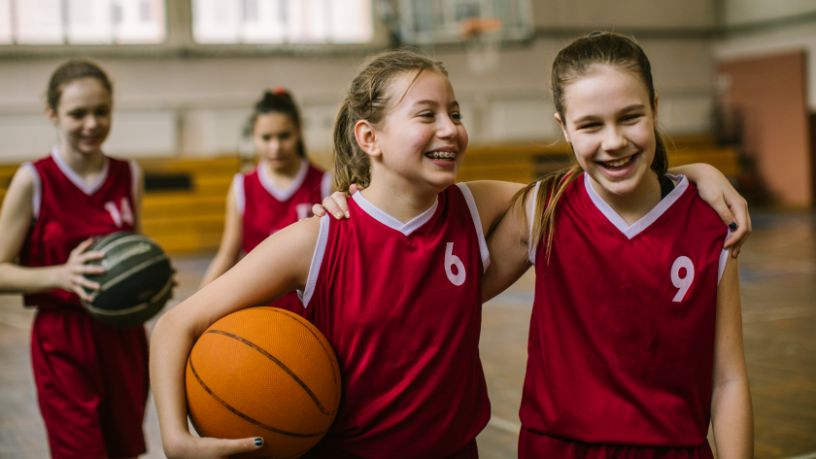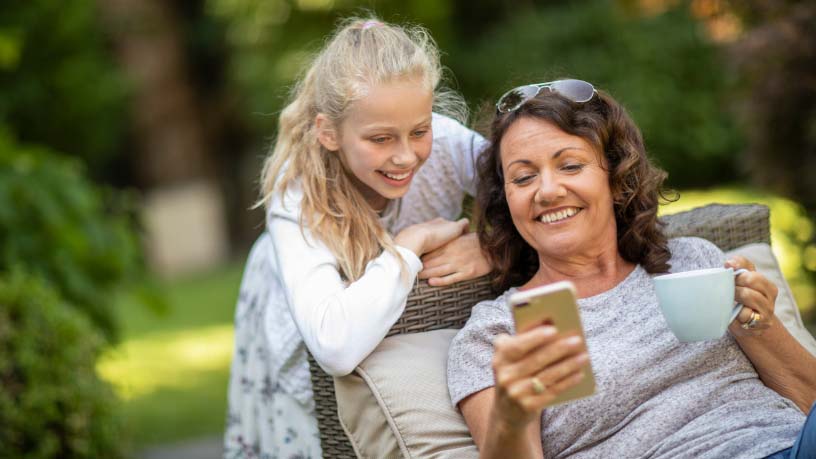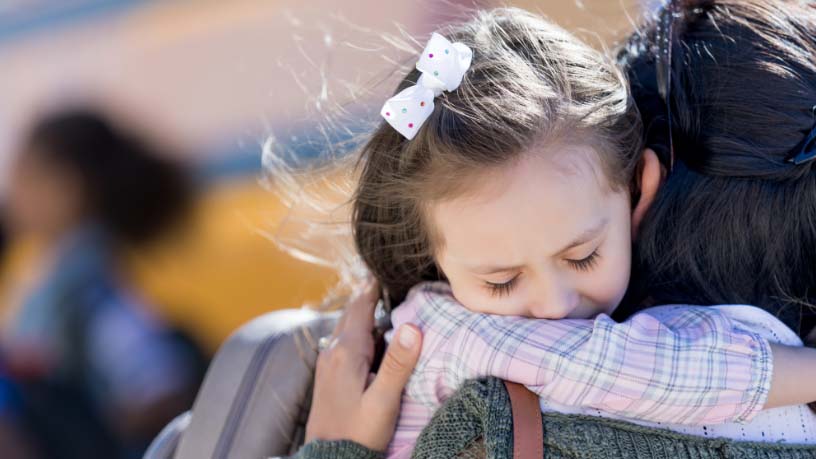Healthy childhood friendships can help support emotional development.
Key takeaways
Boundaries are essential in promoting personal and social growth.
Recognise the signs of an unhealthy friendship.
As parents, we want our children to make friends and be happy in their friendship groups. But that doesn’t always come easily.
Educating our children on the importance of friends and boundaries, plus how to recognise a more ‘toxic’ pal, can help them create meaningful relationships both now and in the future.
Here, we look at the importance of building meaningful friendships with clearly defined boundaries, plus how children can avoid the wrong kind of friends.
The importance of childhood friendships
“Childhood friendships offer a form of emotional anchor,” says Bupa Psychologist Mason Gismondi. “They are a way of supporting a child in navigating challenges [and] can provide your child with a safe outlet for emotional expression.”
Gismondi adds that these healthy friendships can enhance a child’s overall emotional health and maturity. Friendships in childhood are also shown to protect children against mental health issues, such as anxiety and depression, and to help develop empathy and social skills.1
“These skills are vital for building relationships. They’re also important for future success, as children become less dependent on their parents to help them navigate these areas.”
Why are boundaries important?
Boundaries are a necessary part of any healthy relationship as “they form the bedrock of respect and autonomy,” says Gismondi.
“Boundaries provide children with a space to acknowledge their needs and communicate them effectively, while simultaneously acknowledging and respecting the boundaries of their friend.”
By understanding and setting boundaries, children learn to safeguard their physical and emotional wellbeing.
Setting boundaries can help children:
- develop empathy
- build self-awareness
- avoid harmful behaviour
- improve their social skills
- learn to advocate for themselves
- form and maintain healthy relationships.2
“Boundaries also support conflict resolution,” says Gismondi. So, once established, they may be used to manage and avoid any potentially toxic relationships.
“Children will disagree about things. Friendships with established boundaries support children in reaching quick resolutions, helping the friendship itself be more resilient.”
How to help your child in an unhealthy friendship
If your child finds themselves in the midst of regular unhealthy friendships, it’s important to help them learn how to recognise this.
“Signs include guilt-tripping (a form of manipulation), exclusion, hot and cold behaviour, frequent criticism (leading to potential insecurities), overly competitive behaviours and spreading rumours,” says Gismondi.
“It’s important to support your child in establishing boundaries and open communication. Friendship is a two-way street.”
[A primary school age boy and girl stand in a photographic studio talking to camera. Text appears on screen asking the children questions that they answer to camera]
[Text on screen: Today we talk about Friendship. What do you do to be a good friend?]
Boy: Um, being a good friend to me would mean, like, always being loyal, but also knowing when to say…
Girl: You’ve gone too far. Um, knowing when to like, when your friends are uncomfortable, when you need to stop, and also knowing that you can tell your friends if they need to stop.
Boy: You’re probably better at this than me.
[Text on screen: What can we do if we’re having an unhealthy friendship moment?]
Boy: Just talk to them about it, and then maybe just let them… just think to themselves, or maybe you can think to yourself as well.
Girl: But you need to be in the Green Zone with that conversation.
[Text on screen: What is the green zone?]
Girl: You’re speaking rationally when you’re in the Green Zone, because if you’re in the Red Zone, and you’re talking to a friend, you can scare them off even more. Or if you’re in the Blue Zone while speaking through it, your friend could feel even more worse. Yellow Zone, you won’t say it right.
Boy: You’ll be laughing the entire time.
Girl: Yeah, um, but Green Zone, you speak it rationally, you make your friends know what they’ve done, and you make you both feel happy about it.
Boy: Yeah.
Girl: Like, okay about it. Yeah.
[Text on screen: What do you do to get in the green zone?]
Girl: Sometimes I just need to walk out, have a break, a few deep breaths…give it a day.
Boy: Just drink some water. Have some chocolate.
Girl: Have a break.
[Text on screen: Kids Helpline @ School has conversations like these with young people across Australia every single day. Learn more about our range of topics at school.kidshelpline.com.au]
Both: 1800 55 1800!
How to teach children about red and green zones
According to Gismondi, it can helpful to break down friendships into positive and negative ‘zones’. These include:
The red zone
When children are in the ‘red zone,’ they’re no longer able to control their emotions.
“This can result in conflict and, sometimes, behaviour that might be detrimental to a friendship.”
Friendships that regularly dip into the red zone might appear draining and unpredictable. One minute your child might be best friends with someone, only to discover the next minute that that ‘friend’ has excluded them from an activity.
The green zone
The green zone refers to a healthy, positive state of interaction and connection. It makes children feel safe, respected and valued by their friends. It also means that when there is an unhealthy friendship moment, disagreements can be addressed in a healthy and respectful manner.
Friends in the green zone can communicate openly to resolve conflicts without damaging the relationship.
“When children are in this zone, they have a greater capacity to listen to others, understand feelings and communicate their own feelings in a way that’s easily understood,” says Gismondi.
Parents should remind children that they deserve to have friends in the green zone. “It’s important for kids to recognise the signs of a healthy friendship and one that’s not,” says Gismondi. “This will help them bring out the best in themselves and their friends.”

At Bupa, trust is everything
Our health and wellbeing information is regularly reviewed and maintained by a team of healthcare experts, to ensure its relevancy and accuracy. Everyone's health journey is unique and health outcomes vary from person to person.
This content is not a replacement for personalised and specific medical, healthcare, or other professional advice. If you have concerns about your health, see your doctor or other health professional.
You might also like...
How to help children make friends
Making friends isn’t always easy, but there are things you can do to help your child make meaningful connections and healthy friendships.
How to talk to your kids about social media
Social media is a daily part of our kids’ lives, whether we like it or not. So, what are the risks and benefits, and how can we keep our kids safe online?
Bullying: A guide for parents and carers
It’s hard to know what to do when your child is being bullied, or how to recognise the signs in the first place. Check out this guide for some helpful tips.
How to have conversations with kids
It’s like the flick of a switch. Suddenly, your little chatterbox doesn’t want to talk to you anymore. So, what can you do to help your child open up again?





